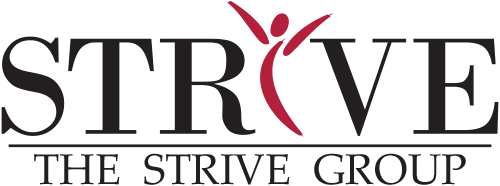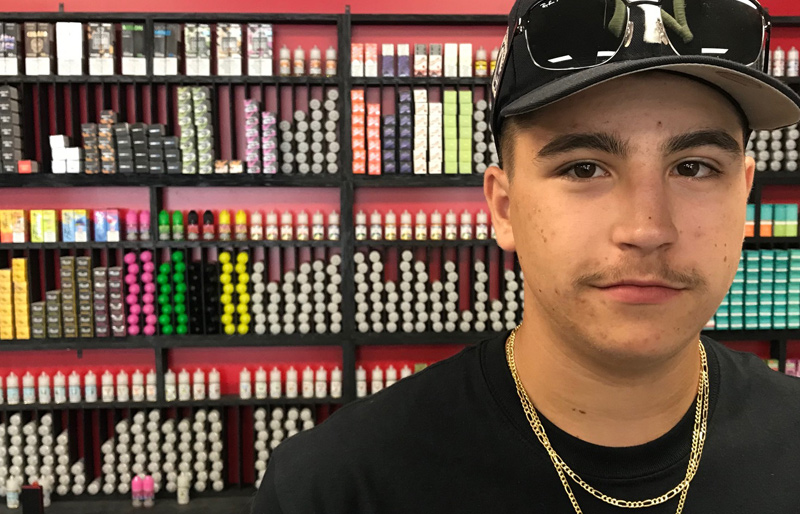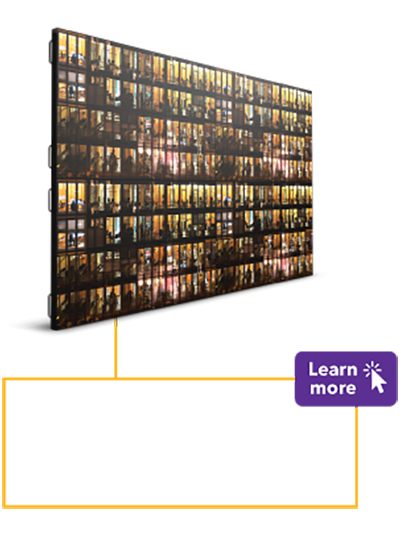
Oct-Dec 2019




Contents
UC Berkeley-Haas School of Business
Visiting Faculty, Princeton University

Rick Thomas
Editor
Nance Larsen
Cover Story Photo
Jim Block
Visualizer
Jeanette Hamje
The STRIVE Group, LLC
Subscribe to the Magazine
thestriveproject.com/subscribe
Copyright © 2019
The Strive Group, LLC
All rights reserved.
o one ever plans to start a charitable foundation in memory and honor of their 21-year-old son.
I never did.
But on January 16, 2018, my middle son Tyler died by suicide.
My whole world shattered, and it will never be the same. Tyler was amazing. This is not just simple "proud Dad" talk. To those lucky enough to have known him a little or a lot, all agree he was just "awesome," his own favorite adjective. You won’t find many who are more kind or sweet or self-aware than Tyler was at his age. But with the world at his feet and his dreams directly in front of him, he got sick.

Impacting Meaningful Change
n 2009, I decided to leave a long career in political campaigning to look for something more meaningful. I had traveled some throughout the years and I knew that I wanted to spend time volunteering in a foreign country, specifically a Spanish-speaking country in Latin America. I found a great niche in the southern Peruvian city of Arequipa. With a population of 1.4 million people, Arequipa is called “La Ciudad Blanca” (“The White City”) due to its many stunning baroque-style buildings made of sillar, a white volcanic stone generated from the famous “Ring of Fire” in the western Andes. With the regional distinction of being Peru’s second largest city, Arequipa has a very strong Spanish/European feel with a vibrant culture represented by a very proud people. It is also often the base for visiting Cotca Canyon, famous for its massive condors.

To learn more, call 907-564-1622
or visit www.alaskacommunications.com/healthcare.
To learn more, call 907-564-1622
or visit www.alaskacommunications.com/healthcare.

needed to do something completely removed from my professional life. For 25 years I had focused intently on raising my children and building a career in public relations. Life was about balancing family and professional priorities. While the kids were young, I attended countless close-to-home leadership seminars, read management and business material from the bleachers at sports practices and completed a Master’s degree, studying while my teenagers did homework at the kitchen table. In 2016, with the kids off at college and my career established as a chief communications officer, I finally had time to immerse myself in something just for me. Only something intense and challenging would take my mind off work. 11
Yoga teacher training in Costa Rica fit the bill. Completing a 200-hour yoga certification in two weeks with Marianne Wells Yoga School was intense. From 5 a.m. to 9 p.m. we studied philosophy, learned anatomy, read everything from ancient texts to kinesiology articles and practiced asana, the physical part of yoga. I was out of my element and far from my corporate comfort zone. I didn’t know any of the other students, who came from every imaginable background. They knew nothing about me, my family, work or accomplishments. On the class continuum, I was older, less strong and flexible and less interested in a career teaching yoga. While I hoped to offer the occasional non-profit or workplace class, my real goal was to earn a certification in an area unrelated to my career.




hroughout our tribe’s storied past, our survival has depended on our ability to adapt and be resourceful. As times change, our approaches to how we live, work and communicate adapt to become ever more entwined with technology. I wouldn’t call myself an ordinary user of communication technology. I’d call myself and my community – the Ponca Tribe of Nebraska – extraordinary users of communication technology.
When it comes to technology-enabled communication of any variety, be it by video, phone, email or, increasingly, chat, the stakes are usually relatively low. At the least, it might be keeping an interpersonal relationship going with a distant friend. At the most, it might be contributing to a business team output, outcome or bottom line. Our stakes for communication, by contrast, are historically high.
or in-person
 Becoming a Supervisor
Becoming a Supervisor
 Respectful Workplace
Respectful Workplace
 Effective Communication
Effective Communication
 I’m Not a Lawyer!
I’m Not a Lawyer!
 Decision Making
Decision Making
 Conflict Resolution
Conflict Resolution
 Discipline for Positive Outcomes
Discipline for Positive Outcomes
 Effective Delegation
Effective Delegation
 I Want You!
I Want You!
 Key Performance Indicators
Key Performance Indicators
 Performance Management
Performance Management
 Coaching & Mentoring
Coaching & Mentoring
 Mission, Vision and Values
Mission, Vision and Values
thestrivegroup.com/events-supervisor-bootcamp

ut of the box. Thinking, getting, being “out of the box” is a well-worn cliché. I’ve used it, and you probably have, too. But what is this box we’re all talking about? What’s in it, what keeps us in it, and why do we want so badly to get out of it?
These are the questions I thought about on the train from New York to New Haven a couple years ago to teach a group of executives about innovation strategy at Yale’s School of Organization and Management. I was curious how to make these questions more real and relevant. So I decided to try an experiment.
Photo by Jim Block

Photo by Jim Block
ut of the box. Thinking, getting, being “out of the box” is a well-worn cliché. I’ve used it, and you probably have, too. But what is this box we’re all talking about? What’s in it, what keeps us in it, and why do we want so badly to get out of it?
These are the questions I thought about on the train from New York to New Haven a couple years ago to teach a group of executives about innovation strategy at Yale’s School of Organization and Management. I was curious how to make these questions more real and relevant. So I decided to try an experiment.

y favorite color is black. Besides its slimming effect, it is the color of the void. In the void lies all possibility and change. In the void lies the future.
I have grave concerns about climate change and the growing inequality that future generations will face, but I also have great hope. I believe that collectively we have the ability and the responsibility to construct a better future for the next generations. That construction will require change, and a lot of it. While change might make some people cringe, I find it invigorating.
To be successful as a professional, as a parent and as a citizen, I must work on today’s issues but also focus on what is going to happen tomorrow. Similarly, we, as a locality, region, state, nation and global community, need to be looking forward and prepared for shifts that will determine our prosperity in the coming years.

Photos by Britteny Cioni-Haywood
y favorite color is black. Besides its slimming effect, it is the color of the void. In the void lies all possibility and change. In the void lies the future.
I have grave concerns about climate change and the growing inequality that future generations will face, but I also have great hope. I believe that collectively we have the ability and the responsibility to construct a better future for the next generations. That construction will require change, and a lot of it. While change might make some people cringe, I find it invigorating.
To be successful as a professional, as a parent and as a citizen, I must work on today’s issues but also focus on what is going to happen tomorrow. Similarly, we, as a locality, region, state, nation and global community, need to be looking forward and prepared for shifts that will determine our prosperity in the coming years.
ever in a million years did I dream I would start the first law school in Alaska. Not only am I the first person in my family to attend law school, I am also the first to attend a four-year university.
Until recently, Alaska remained the only U.S. state without a law school. This changed after a five-year, groundbreaking journey where I led the vision, design and strategy to open the first law school in the state. Not only was this a historically noteworthy time in Alaska, it also marked a meaningful point in my personal and professional life. As I led this enterprise, I discovered one of the greatest lessons of my life: Leadership that leads from within holds transformative power and influence to change the world.
One year after I graduated from Seattle University School of Law, they asked me to teach one of their summer classes in Alaska. They had been offering a summer program in Anchorage for several years, but soon into my teaching debut I imagined the tremendous potential of expanding their Alaska presence beyond a summer course. When I returned to Seattle at the end of the summer, I approached the dean with the idea of opening a law school in Alaska. He was intrigued and gave me the green light to proceed in exploring this possibility.
have great compassion for my doctor, my dentist and my proctologist. I’m a portrait photographer, so I know what it’s like to greet clients with fear in their eyes. My greatest success, and my greatest joy, is when they leave relaxed, and perhaps a bit transformed.
After 30 years and millions of exposures, I remain obsessed with creating empowering experiences with the subjects I view through the lens. The elusive goal: to reinvent the traditional relationship of photographer-subject, as something less passive, more active and collaborative. I want my subjects to walk away restored.
Behind the lens, I play many roles: standup comic, therapist, life coach. Humor and empathy are in my tool kit along with the filters and light meter. There is no “one size fits all” approach to portraiture. The sessions ultimately come down to the moment, myself and my subjects, and the process, communicating clearly, building trust expeditiously and encouraging collaboration and input. There is also the added “x” factor: the accident or surprise that occurs during a shoot. How you incorporate this unscripted event may very well be the most important element for success.

STEP 2: Create interest
STEP 3: Motivate Action
STEP 4: Reap rewards
- AxisTV Signage Suite content management software is scalable, flexible and user-friendly.
- Award-winning interactive touchscreen designs invite your audience to participate.
- Interactive and e-paper meeting room signs help you manage shared spaces more efficiently.



t approximately 8:30 a.m., on Nov. 30, 2018, things got a bit shaky in Anchorage, Alaska. A massive 7.1 magnitude earthquake hit just 10 miles north of the city. More than 6,000 aftershocks would affect this area within weeks, many of which were calculated at a magnitude of 4 or higher.
After the initial shocks had subsided (pun intended), I, along with others, quickly learned about civil engineering, specifically geotechnical engineering. This was because our properties or work locations were damaged and in need of investigation and repair.
Today, I find myself reflecting upon the damage the earthquake caused to our local businesses and drawing some parallels to leadership. I call it “geotech leadership.”
Just like geotechnical engineering, geotech leadership includes the investigation of subsurface issues and the identification of a proper foundation. It includes the analysis and evaluation of a variety of environmental factors and probable outcomes. Finally, it includes recognizing and executing mitigation activities.
irport terminals are ideal places for interviewing strangers. Lots of down time, lots of isolation, lots of staring at nothing. Cell phones preoccupy most folks here at Minneapolis/St. Paul International, but the empty faces suggest a lack of authentic engagement. As incredible as electronic devices can be, they can’t replace human interaction. Most people would welcome a random conversation if I initiated one.
I know this because that’s what I’m doing all summer: interviewing strangers, more than 250 of them, across all 48 contiguous states. And almost every one of them wants to talk.
I am on a mission to find the root causes of perceived academic apathy among teenagers, and to ask what schools might do to minimize amotivation and increase students’ autonomous motivation. In spite of considerable advancements in data-driven instructional change, recent scientific understanding of adolescent brain development, and implementation of social-emotional and trauma-informed programs, teenagers appear to remain academically disengaged and unmotivated in school. And according to the most recent Gallup poll on student engagement, their disinterest and detachment is worsening. From most adults’ perspectives – including those of many teachers – high school students appear apathetic and amotivated.
helping you and your business move forward.
- Assessments
- Training
- Coaching
- Training
- Coaching
- Team Building
- Strategic Planning
- Action Planning
- Infrastructure Development

907.2.STRIVE



MAKING SIMPLE THE NEW NORMAL
THE CHARIOT GROUP:
![]() EXPERIENCED
EXPERIENCED ![]() KNOWLEDGEABLE
KNOWLEDGEABLE ![]() PROGRESSIVE
PROGRESSIVE
![]() EXPERIENCED
EXPERIENCED![]() KNOWLEDGEABLE
KNOWLEDGEABLE![]() PROGRESSIVE
PROGRESSIVE
Powerful, transparent technology that works.
OUR SERVICE MAINTENANCE AGREEMENTS INCLUDE:
![]() Preventative Maintenance
Preventative Maintenance![]() Both On-site & Remote Support
Both On-site & Remote Support![]() MySupportTM Web Portal
MySupportTM Web Portal![]() File Retention
File Retention![]() Training
Training![]() Equipment
Equipment
info@chariotgroup.com | 877.822.5300 | www.chariotgroup.com

Thanks for reading our Oct-Dec 2019 issue!



























